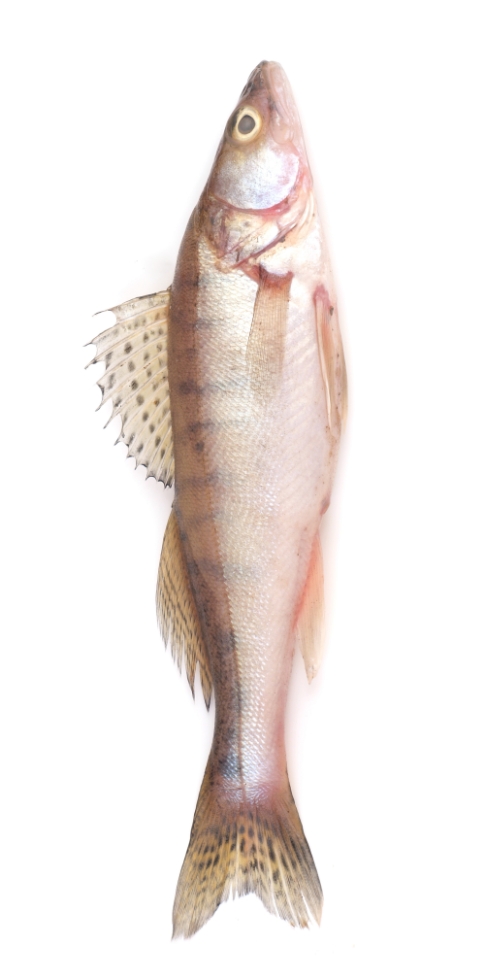Zander
How, what, where, why?
| Surname: | Zander |
| Other names: | Sander |
| Latin name: | Sander lucioperca |
| Class: | Fish |
| Size: | up to 120cm |
| Weight: | up to 20kg |
| Age: | 15 - 20 years |
| Look: | greyish-green above and silvery-white below |
| Sexual dimorphism: | No |
| Nutrition type: | fish eater (piscivore) |
| Food: | smaller fish |
| Distribution: | Europe, Asia |
| Habitat: | fresh and brackish water |
| Natural enemies: | gray heron |
| Sexual maturity: | occurs between the age of 3 and 5 |
| Mating season: | March - June |
| Oviposition: | up to 200,000 eggs |
| Threatened with extinction: | No |

Interesting facts about the zander:
- The zander describes a species of predatory fish that belongs to the group of the Percidae and is native to large parts of Europe.
- The zander inhabits deep lakes and rivers, where it mostly stays near the bottom.
- With the exception of northern Scandinavia, northern Russia and the southern Balkans, it can be found in almost all of Europe and is considered the largest European representative of the perciformes.
- The fins are covered with blackish small spots and parallel stripes.
- Like all perciformes, the zander also has a divided dorsal fin. The spiny rays characterize the appearance of the front part, the limb rays that of the completely separate rear section.
- At the end of the pointed head is a wide mouth with pronounced fangs.
- The zander's bright yellow eyes are striking.
- Alongside the pike, the zander is the most important freshwater predatory fish in Europe.
- In contrast to the pike, the zander has a much better hearing. Because he also has excellent eyesight, he can hunt in very murky waters and in the dark.
- It prefers to stay at depths of several meters, where it preys mainly on smaller perch, roach, bream, bleak and gudgeon.
- Preferred spawning areas are riparian zones up to three meters deep, where the zander digs small pits on the bottom.
- The eggs, which have a sticky outer shell, are attached to plants, roots or stones and are cared for and guarded by the male.
- The larvae hatch after a week, feeding first on plankton and later on the eggs and young of other fish species.
other fish species. - The life expectancy of the zander is a maximum of twenty years.
- In addition to its role in sport fishing, the zander is also of great importance as a food fish. Its white flesh is compact and is often prepared as a fillet, but also serves as a basic ingredient for fish farce.
- The zander is considered a new promising candidate in aquaculture, especially for diversification.
(Source: https://www.biologie-schule.de/zander-steckbrief.php)
facts
Over 17,000 tons of fish are flown into Germany every year.
Climate: Food by air freight (source: look out).
facts
“Everything we do has an impact, including fish farming. We need to minimize that impact."

General Manager ASC for Germany, Switzerland & Austria & Regional Manager Europe
facts
Deep-sea fish and fish from aquaculture has the lowest carbon footprint of all animal protein sources
Based on: www.deutscher-fischerei-verband.de – Sustainability
facts
Remains of an 8,000-year-old fish farm created by the GunitjmARA, AN ABORIGINAL TRIBE, have been found near Melbourne, Australia.
Sustainability
Our claim to rearing.
Sustainable is the maximum utilization of the resources used. We achieve this through efficient modern technology and processes. We are climate neutral.